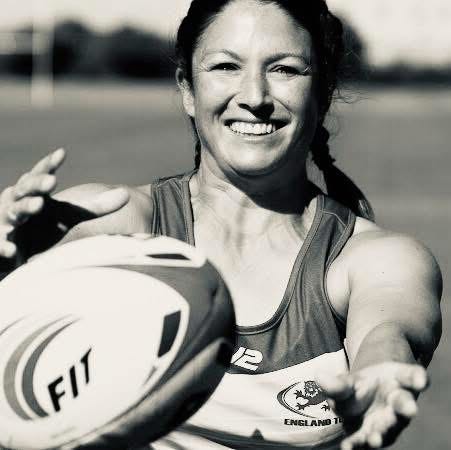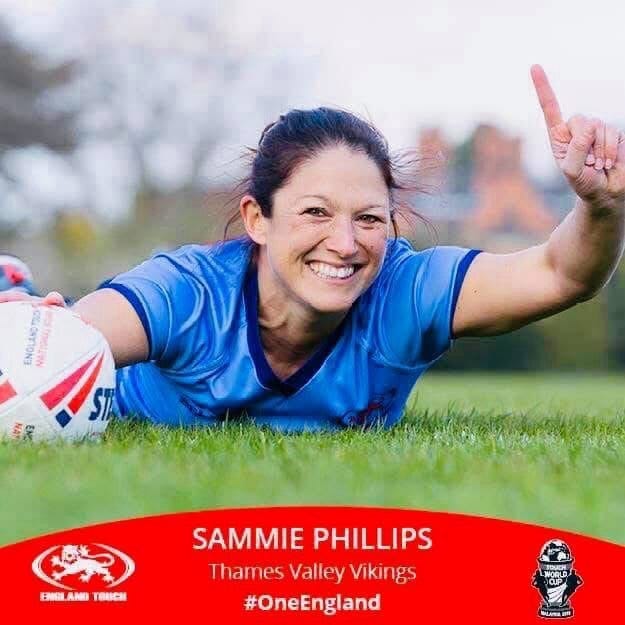High Performance Sport with England Touch
Sammie Phillips is the General Manager and Head of Elite Coaching at England Touch. She gives some insight into Touch rugby, her role and why contact players should play Touch.
I’m the General Manager and Head of Elite Coaching at England Touch.
As a General Manager, I am responsible for the day-to-day operations of the organisation. I review and implement operational procedures, and assist departmental heads.
As the Head of Elite Coaching, I look after the recruitment, training, development and review of approximately 60 national squad head and assistant coaches. I also assist them with their game plans, session content and in-tournament tactical support.
High Performance Rugby
We currently have 4 high performance programmes, which run simultaneously, for our youth, opens, seniors and masters athletes. This is currently 19 national squads.
Our high performance programme runs in 4 year cycles, which includes European tournaments, Atlantic/Pacific tournaments and culminates in World Cup tournaments.
Our athletes receive holistic support from coaches, managers, physiotherapists, strength and conditioning coaches, performance psychologists and nutritionists. This alongside overall support from the High Performance team, performance analysts and sport scientists.
Our charity partner, Brave Mind, have also delivered mental health workshops to our athletes and staff. Athletes also attend a series of pre-selection and post selection camps to prepare them for international competition.
We very much believe in the holistic approach to elite coaching and development the person, as well as the athlete.
They are amateur athletes, so we want to help them to manage their commitments outside of elite sport to enable them to perform to the best of their ability at training camps and in competition.
My sporting journey
I started off my journey as a gymnast, which equipped me with a variety of physical competencies which continued to serve me well in all sports I played subsequently.
Athletics and football were favourites as a teen and I ran for Harrow and competed in the national league in 400m hurdles. However, it was at university in Plymouth that I found rugby.
It was almost by accident as a housemate convinced (bribed) me to come and play to make up numbers. I absolutely loved it and never looked back.
I was fortunate to be selected to play for England South Students, then England Students, then into the full England squad, as well as joining Saracens after leaving uni and had 5 immensely enjoyable and life changing years in the sport.
However, following a knee injury sustained in a 7s tournament, I needed 2 operations and a year out of the sport. A friend mentioned a local Touch League and said I should join to get my confidence back up for playing contact rugby so I joined and the rest is history.
I have just completed my final tournament for England Touch, which was my 5th Touch World Cup, where my team won a silver medal. I bowed out on 96 caps after 20 years of playing at elite level, minus 2 years out for 2 pregnancies.
The rules of Touch
Touch is different to Rugby Union and Rugby League, as it is non-contact and focuses purely on the core skills of evasive running, passing catch, making touches and scoring tries.
Touch can be played by all ages, genders and abilities. It is great for skill acquisition, improving fitness and it’s lots of fun to play.
At grassroots level, it is a very easy game to play with the following rules (in a nutshell):
Touch is 6-a-side (3 males, 3 females for mixed) and teams can have up to 14 in a team with rolling subs throughout games.
There is no kicking, it’s all about attacking space with footwork and passing.
Attacking rules:
The attacking teams taps off at the halfway point on the pitch.
The ball barrier can run (dodge), pass (backwards rugby style) or take a touch with the aim of advancing the ball towards the opposition’s try line and scoring a try without being touched by an onside defender.
Defending rules:
The defence start the game 10m back from the half way line and can play as soon as the attacking team tap off.
The aim of the defence is to stop the ball carrier from getting through the gaps between defenders and scoring a try by making a “touch” on them.
A “touch” is one-handed and and contact with the ball carrier (body, clothing, hair, the ball itself) counts as a “touch”.
It is helpful to the referee is the defender shouts “touch” once they have made a touch.
Once a defender makes a touch, all defenders must retreat back 7 metres and wait until the ball is played before advancing again.
After the ball carrier is touched:
Once the ball carrier has been touched, they must place the ball between their feet and step over it (this is known as the “rollball” although rather confusingly we coach not to roll the ball but place it down static instead).
The closest player to the rollball (known as the “half” for this moment in time), must pick up the ball and pass it off for the game to continue.
There are 2 special rules concerning the half: they cannot score and if touched in possession then there is a turnover so it is best to pass the ball straight away (especially if you are new to the game).
Turnover rules:
If the attacking team have not scored a try before the 6th touch occurs, then it is a turnover and the other team get the ball.
Turnovers of possession occur when the ball is dropped, goes out of play, is passed forward, is over the mark (the rollball occurs more than a step past the point the touch was made) and when the ball is passed rather than rolled after a touch (touch-pass).
Penalties can also be awarded against defenders for too much contact in the touch (hard touch), being offside (not retreating 7m and interfering with play).
There are some more technical rules, but they are only applied at higher levels of the game.
Whilst it’s a simple game at grassroots level, it can be incredibly tactical and complex at elite level with attacking and defensive sets of players interchanging at lightening pace and multiple phases of play all sequenced to produce particular results.
Think American Football but with no time outs!
Why contact players and coaches should engage with Touch rugby
Touch is an excellent skills acquisition activity for contact players. The isolation of footwork and pass/catch heightens the development of these skills and the scanning, creation of space, decision-making and execution at high speed are all transferable to contact.
I am confident that I would have been a much better rugby player had I played touch first, my footwork, passing and read of the game is so much better now.
Contact coaches should coach Touch to focus on the core pass/catch skills essential for all rugby players.
Touch also helps with mental processing skills and speeds up scanning and decision-making.
Contact coaches can also talent ID Touch players who might also be interested in playing contact in the winter.
There are multiple routes into playing Touch at grassroots level including: schools, colleges, universities, clubs, local leagues, workplaces, camps and events.
There are then additional playing opportunities regionally (Regional Club Touch Series) and representing your region at Touch Nationals for adults (May)and youth (August) to national competitions (schools, BUCS University Touch Championships, Club National Touch Series). Then, finally selection into national youth, opens, seniors and masters squads in mixed, male and female formats.
Hosting the World Cup
England recently hosted the Touch World Cup in Nottingham, with 187 representative teams attending over 13 divisions. England entered all 13 divisions.
This event was delivered by 4 employees and an army of volunteers (on the part of England Touch) and support from the global governing body (the Federation of International Touch).
Team England also smashed all of the high performance targets winning 2 silver medals for the first time in history and 8 bronze medals.
It was our biggest ever haul and firmly cementing ourselves as third in the world chasing down Australia and New Zealand (two countries in which Touch is very popular and played in the millions).
I am particularly proud to be part of the England Women’s 35s Team who reached the final against Australia and won a silver medal.
Organising the Women in Business and Sport Conference
Alongside my work for England Touch, I also organise the Women in Business and Sport Conference.
It was born out of conversations with Element Six (part of the De Beers Group) after a presentation was delivered to their workforce on high performance.
We discussed the synergies between women in business and sport and the challenges faced and, using funding through the Ambassadors for Good Project, decided to put on a conference to promote female empowerment and gender equity.
We wanted to take a deep dive into the challenges faced by women in both business and sport, and encourage collaboration and collective problem-solving around these issues, as well as an opportunity to network with women and men across many industries and make connections.
Interested in England Touch? Closest clubs and leagues can be located by postcode
If you’re unable to sign up for regular paid subscription, you can still buy me a coffee.







I went to watch the world cup in Nottingham and it was a fantastic event. It was brilliant to see such diversity in one place and the speed and skill of all the players was mind blowing to watch. It sent me to my next training session absolutely buzzing about playing.